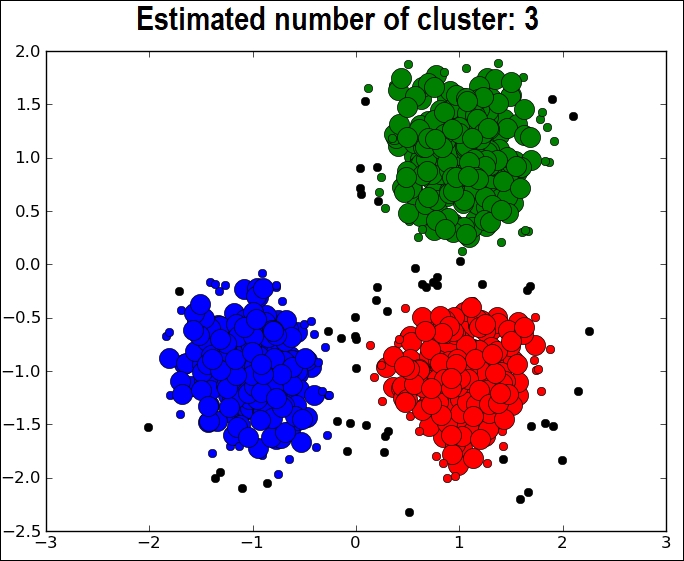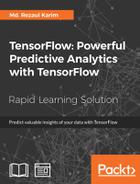In this lesson, we will dig deeper into predictive analytics and find out how we can take advantage of it to cluster records belonging to a certain group or class for a dataset of unsupervised observations. We will provide some practical examples of unsupervised learning; in particular, clustering techniques using TensorFlow will be discussed with some hands-on examples.
The following topics will be covered in this lesson:
- Unsupervised learning and clustering
- Using K-means for predicting neighborhood
- Using K-means for clustering audio files
- Using unsupervised k-nearest neighborhood (kNN) for predicting nearest neighbors
In this section, we will provide a brief introduction to the unsupervised machine learning (ML) technique. Unsupervised learning is a type of ML algorithm used for grouping related data objects and finding hidden patterns by inferencing from unlabeled datasets, that is, a training set consisting of input data without labels.
Let's see a real-life example. Suppose you have a large collection of not-pirated-totally-legal MP3s in a crowded and massive folder on your hard drive. Now, what if you can build a predictive model that helps automatically group together similar songs and organize them into your favorite categories such as country, rap, and rock?
This is an act of assigning an item to a group so that an MP3 is added to the respective playlist in an unsupervised way. In Lesson 1, From Data to Decisions – Getting Started with TensorFlow, on classification, we assumed that you're given a training dataset of correctly labeled data. Unfortunately, we don't always have that extravagance when we collect data in the real world. For example, suppose we would like to divide a huge collection of music into interesting playlists. How canwe possibly group together songs if we don't have direct access to their metadata? One possible approach is a mixture of various ML techniques, but clustering is often at the heart of the solution.
In other words, the main objective of the unsupervised learning algorithms is to explore the unknown/hidden patterns in the input data that are unlabeled. Unsupervised learning, however, also comprehends other techniques to explain the key features of the data in an exploratory way toward finding the hidden patterns. To overcome this challenge, clustering techniques are used widely to group unlabeled data points based on certain similarity measures in an unsupervised way.
In a clustering task, an algorithm groups related features into categories by analyzing similarities between input examples, where similar features are clustered and marked using circles.
Clustering uses include but are not limited to the following points:
- Anomaly detection for suspicious pattern finding in an unsupervised way
- Text categorization for finding useful patterns in the tests for NLP
- Social network analysis for finding coherent groups
- Data center computing clusters for finding a way of putting related computers together
- Real estate data analysis for identifying neighborhoods based on similar features
Clustering analysis is about dividing data samples or data points and putting them into corresponding homogeneous classes or clusters. Thus, a trivial definition of clustering can be thought of as the process of organizing objects into groups whose members are similar in some way, as shown in figure 1:

Figure 1: A typical data pipelines for clustering raw data
A cluster is, therefore, a collection of objects that have a similarity between them and are dissimilar to the objects belonging to other clusters. If a collection of objects is provided, clustering algorithms put these objects into groups based on similarity. For example, a clustering algorithm such as K-means locates the centroid of the groups of data points.
However, to make clustering accurate and effective, the algorithm evaluates the distance between each point from the centroid of the cluster. Eventually, the goal of clustering is to determine intrinsic grouping in a set of unlabeled data. For example, the K-means algorithm tries to cluster related data points within the predefined 3 (that is k = 3) clusters, as shown in figure 2:

Figure 2: The results of a typical clustering algorithm and a representation of the cluster centers
Clustering is a process of intelligently categorizing items in your dataset. The overall idea is that two items in the same cluster are closer to each other than items that belong to separate clusters. This is a general definition, leaving the interpretation of closeness open. For example, perhaps cheetahs and leopards belong to the same cluster, whereas elephants belong to another when closeness is measured by the similarity of two species in the hierarchy of biological classification (family, genus, and species).
